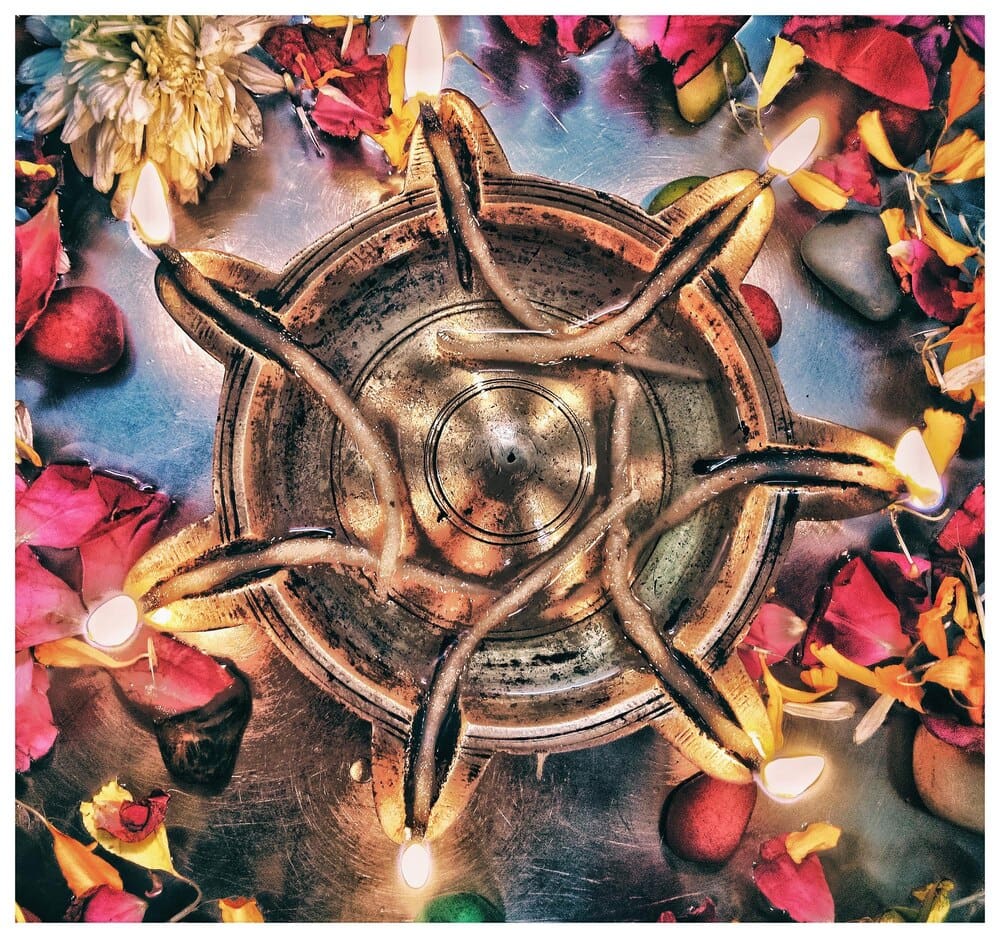In the vast cosmos of Vedic Astrology, the three Gunas—Sattva, Rajas, and Tamas—represent the fundamental qualities of cosmic energy that create, sustain, and transform all of existence. Originating from the ancient Samkhya school of Indian philosophy, these three forces are the very threads from which the fabric of reality is woven, influencing everything from the cycles of nature to the depths of human consciousness. For any student of Jyotish, understanding the Gunas is paramount, as they determine the essential nature of the planets, signs, and houses, revealing why a particular planetary placement manifests as wisdom for one person and ambition or delusion for another. By analyzing their interplay in a birth chart, we uncover the core psychological and spiritual tendencies that drive an individual’s life path.
Understanding the Three Gunas
Before applying the Gunas to a horoscope, it is crucial to understand their individual characteristics. They are not seen as “good” or “bad” but as necessary forces that are in constant interaction. The goal of a spiritual life is not to eradicate them but to cultivate Sattva, allowing it to guide the expression of Rajas and Tamas.
Sattva: The Quality of Purity and Harmony
Sattva is the principle of light, balance, knowledge, and peace. It is the quality of goodness and harmony that fosters clarity and spiritual awakening. When Sattva is dominant, the mind is calm, the intellect is sharp, and one experiences feelings of joy, contentment, and compassion. It is the force that pulls us toward self-realization, truth, and righteousness (Dharma).
Think of Sattva as a clear, tranquil lake, perfectly reflecting the sky above without distortion. In a person, a Sattvic nature manifests as humility, altruism, discipline, and a deep yearning for knowledge. They are naturally drawn to clean environments, pure food, spiritual pursuits, and activities that promote well-being for all.
Rajas: The Quality of Action and Passion
Rajas is the principle of movement, energy, desire, and change. It is the kinetic force that drives action, ambition, and worldly engagement. Without Rajas, no creation or achievement would be possible. It is the fuel of passion, competition, and the pursuit of goals, power, and sensory gratification. It is inherently dynamic and can lead to both great accomplishments and great disturbances.
Rajas can be visualized as a rushing, powerful river. It has the energy to carve canyons and generate power, but it can also flood its banks, causing chaos and destruction. A Rajasic individual is driven, ambitious, and often restless. They are prone to attachment, craving, and emotional highs and lows, experiencing stress and anxiety when their desires are unfulfilled.
Tamas: The Quality of Inertia and Ignorance
Tamas is the principle of darkness, inertia, heaviness, and delusion. It is the force of resistance that grounds energy, but in excess, it leads to laziness, confusion, and decay. Tamas is responsible for the states of sleep and ignorance (avidya), obscuring the true nature of reality. It binds the soul through delusion, attachment to the gross material world, and a lack of motivation.
Imagine Tamas as a heavy, immovable boulder or a stagnant, murky pond. It resists change and obscures clarity. When Tamas is dominant in a person, it manifests as procrastination, depression, addiction, and a clouded intellect. They may be drawn to heavy foods, uncleanliness, and destructive habits, feeling a sense of helplessness or apathy.
The Gunas in the Zodiac Signs
In Vedic Astrology, the twelve zodiac signs are classified by their dominant Guna, which is often linked to their modality—Movable (Chara), Fixed (Sthira), or Dual (Dvisvabhava). This classification reveals the fundamental operational style of each sign.
Rajasic Signs (The Movers): Aries, Cancer, Libra, Capricorn
The movable signs are inherently Rajasic. They are the initiators of the zodiac, full of dynamic energy and a drive to start new things. Their nature is to act, create change, and move forward. This Rajasic quality fuels their ambition and makes them natural leaders, though it can also lead to restlessness.
Tamasic Signs (The Stabilizers): Taurus, Leo, Scorpio, Aquarius
The fixed signs are inherently Tamasic. This is not Tamas in the sense of laziness, but rather in its quality of stability, resistance to change, and inertia. These signs are the sustainers who provide structure and endurance. Their Tamasic nature gives them immense focus and determination, but it can also manifest as stubbornness and an inability to let go.
Sattvic Signs (The Adapters): Gemini, Virgo, Sagittarius, Pisces
The dual signs are inherently Sattvic. They possess a unique blend of movable and fixed qualities, giving them adaptability, intellect, and a connection to a higher purpose. Their Sattvic nature allows them to mediate, communicate, and synthesize information, often guiding them toward knowledge, philosophy, and spiritual understanding.
The Gunas of the Planets
Each of the nine planets (Grahas) used in Vedic Astrology has an intrinsic Guna. This planetary Guna colors its expression, regardless of the sign it occupies. Understanding this is key to interpreting a planet’s influence in the chart.
Sattvic Planets (The Luminaries of Wisdom): The Sun, Moon, and Jupiter
The Sun (Surya) is Sattvic because it represents the Atman, the pure soul and divine consciousness. The Moon (Chandra) is Sattvic as it governs the Manas, the receptive and reflective mind. Jupiter (Guru) is the ultimate Sattvic planet, representing higher wisdom, divine grace, and the principle of expansion toward truth.
Rajasic Planets (The Engines of Desire): Mercury and Venus
Mercury (Budha) is Rajasic due to its restless, intellectual nature, governing communication, commerce, and the constant movement of thoughts. Venus (Shukra) is the planet of desire, driving the Rajasic pursuit of pleasure, luxury, relationships, and worldly beauty. Together, they fuel our engagement with the material and social worlds.
Tamasic Planets (The Agents of Karma and Transformation): Mars, Saturn, Rahu, and Ketu
Mars (Mangal) is Tamasic because of its association with raw, impulsive force, aggression, and conflict. Saturn (Shani) is the primary Tamasic planet, representing darkness, limitation, delay, and the heavy weight of karma and time. Rahu (the North Node) is Tamasic as it creates insatiable desires, illusion, and obsession, while Ketu (the South Node) is Tamasic through its influence of loss, confusion, and forced detachment.
The Interplay of Gunas in a Birth Chart
The true art of astrological interpretation lies in synthesizing these layers. A planet’s Guna interacts with the Guna of the sign it occupies, creating a unique expression. For example, a Sattvic planet like Jupiter in a Rajasic sign like Aries can produce a dynamic spiritual leader who actively fights for a cause. Conversely, a Tamasic planet like Saturn in a Sattvic sign like Pisces can create profound spiritual discipline through solitude or, if afflicted, a deep sense of melancholic escapism.
The dominant Guna in a person’s temperament can be assessed by examining the Ascendant and its ruling planet, the Moon’s sign and dispositor, and the overall balance of planets across Sattvic, Rajasic, and Tamasic signs. A life unfolds through the Dasha system (planetary periods), where the Guna of the ruling planet will dominate that specific era of life, bringing its themes to the forefront.
Practical Application and Astrological Remedies
Understanding your Gunic constitution is a powerful tool for self-awareness and personal growth. It provides a cosmic framework for why you are the way you are and offers a clear path for creating greater balance.
Cultivating Sattva
Regardless of your chart, the ultimate goal is to increase Sattva. This can be done through conscious lifestyle choices. Engaging in practices like meditation, yoga, and pranayama (breathing exercises) directly calms the mind. Consuming a Sattvic diet—fresh fruits, vegetables, and whole grains—purifies the body. Spending time in nature, listening to calming music, and engaging in selfless service (Seva) all elevate consciousness.
Managing Rajas
For those with a strong Rajasic nature, the key is not suppression but skillful channeling. Ambition should be directed toward constructive, ethical goals. Regular physical exercise is essential to burn off excess restless energy. Mindfulness practices can help quiet the agitated mind, and learning to balance intense work with periods of deep rest can prevent burnout and anxiety.
Overcoming Tamas
To counteract a dominant Tamasic influence, one must consciously invite light, movement, and clarity. Establishing a consistent daily routine, especially waking before sunrise, is highly effective. Regular, vigorous exercise is non-negotiable. It is crucial to avoid Tamasic foods (stale, processed, or heavy foods) and substances. Actively seeking knowledge by reading uplifting books and engaging in stimulating conversations helps dispel the fog of ignorance.
The three Gunas are not just abstract philosophical concepts; they are the living, breathing energies that animate our astrological charts and our lives. They are the colors on the cosmic palette with which our personal reality is painted. By understanding our unique blend of Sattva, Rajas, and Tamas, we are empowered to work with these fundamental forces, consciously steering our lives away from delusion and agitation and toward a state of harmony, purpose, and enlightened awareness.








